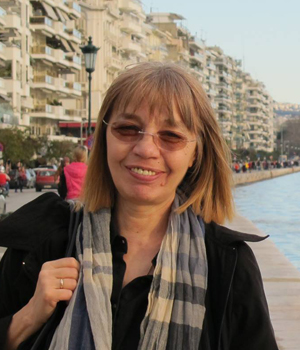The Centre of Thracology with the Institute of Balkan Studies, named after Prof. Alexander Fol, marks its 45th anniversary. We speak with famous expert in Thracology Prof. Valeria Fol about our culture and the rich Thracian heritage. What are the monuments left by the Thracians?
 “The Thracians left numerous monuments from the period locked between the 3rd millennium BC, when the forming of the Thracian ethnicity began and late Antiquity. I must underline here that the Thracian culture was aristocratic in its essence – I mean shiny treasures and parade weaponry. We have fortresses, many megaliths and rock-carved sanctuaries. Of course, we have settlements and necropolises – we find buried in the ground everything that accompanied a person’s life within the society. Luckily, Bulgaria keeps the political and religious centres of the largest Thracian kingdoms – Odrys, Gethys, Bessi and Triballi. That is why the political and religious centre, formed in the valley around Kazanlak, the lands around Panagyurishte, Starosel etc. can be seen on our territory. The Rhodope Mountain has preserved some of the greatest sanctuaries, some of them being observatories as well. The situation is the same in the Balkan Range, the Sredna Gora Mountain, while the Sakar, Eastern Rhodope and Sredna Gora are also full of megalith monuments very well preserved.”
“The Thracians left numerous monuments from the period locked between the 3rd millennium BC, when the forming of the Thracian ethnicity began and late Antiquity. I must underline here that the Thracian culture was aristocratic in its essence – I mean shiny treasures and parade weaponry. We have fortresses, many megaliths and rock-carved sanctuaries. Of course, we have settlements and necropolises – we find buried in the ground everything that accompanied a person’s life within the society. Luckily, Bulgaria keeps the political and religious centres of the largest Thracian kingdoms – Odrys, Gethys, Bessi and Triballi. That is why the political and religious centre, formed in the valley around Kazanlak, the lands around Panagyurishte, Starosel etc. can be seen on our territory. The Rhodope Mountain has preserved some of the greatest sanctuaries, some of them being observatories as well. The situation is the same in the Balkan Range, the Sredna Gora Mountain, while the Sakar, Eastern Rhodope and Sredna Gora are also full of megalith monuments very well preserved.”
As Prof. Fol points out, the Thracians had connections in different directions. For instance, their trade relations spread both to the North and also to Asia Minor, the Middle East, Central and even North Europe, all the way to the Baltic Sea. There were dynastic marriages as well – aristocracy would take princesses from the neighboring kingdoms. That shiny Thracian aristocracy was typical as early as the start of the Third Millennium, since huge mines of gold, silver and copper could be found on their territory. Thrace also traded with another major product – salt, during the Chalcolithic period and also withtimber, different foods… Stock breeding and farming were equal branches in its economy and exclusively in its agriculture. One essential detail here: the Thracians were mounted people – from the aristocracy to the army, a great part of which was cavalry. They were a really powerful striking force, just like the tank brigades during WWII,” Prof. Fol remarks and adds:
“The Bulgarian culture has preserved a huge amount of relicts, related to the Thracian faith and rituals. Those are subject to serious studies, because they form our identity. Other surveys are being carried out right now, including genetic ones, but we must say here that culture is what determines your ethnicity. And the Thracians have left us a lot: from the masquerade rituals and fire dancing to many wedding ritual elements, burial and birth rites – the overall life cycle of a person.”
What were the riddles of the Thracians?
“They have left plenty of those! Bear in mind that they were people with very serious achievements in the spheres of technology, in the processing of metals and in astronomy. They preserved their knowledge without writing anything down, i.e. they relied on training and education – both in open groups and in closed communities. For instance, they had those marvelous skills to build acoustic halls. Now we research the acoustics in the places, known by the public as thumb mounds. In fact most of those were temples for education and training of aristocrats. They knew the power of knowledge and transferred it to those only who deserved it with the proper qualities. That was why mysteries yet in ancient times were related to the Thracians, Orpheus and the closed male communities. Knowledge was passed on in a different manner with women, after dedication within similar groups. They were also very good medical men and women, who knew a lot about herbs and minerals,” Prof. Fol says in conclusion.
English version: Zhivko Stanchev
For the first time, two of the most mysterious archaeological sites in the Eastern Rhodopes have been studied in detail from air. Bulgarian archaeologists scanned the Harman Kaya rock complex near the village of Bivolyane and the ancient Asara fortress..
After the Liberation in 1878, Bulgaria began to develop at a pace that would make up for the centuries-long absence from the world history map. Young Bulgarians graduated from prestigious European universities and took their knowledge to their homeland..
One of the three biggest Hebrew holidays, Pesach (Passover) starts at sundown (5 PM) on 22 April and ends on 30 April. It is a movable feast, falling after the 14 th day of the spring month of Nisan which starts after the spring equinox with the..
After the Liberation in 1878, Bulgaria began to develop at a pace that would make up for the centuries-long absence from the world history map. Young..
For the first time, two of the most mysterious archaeological sites in the Eastern Rhodopes have been studied in detail from air. Bulgarian archaeologists..

+359 2 9336 661
